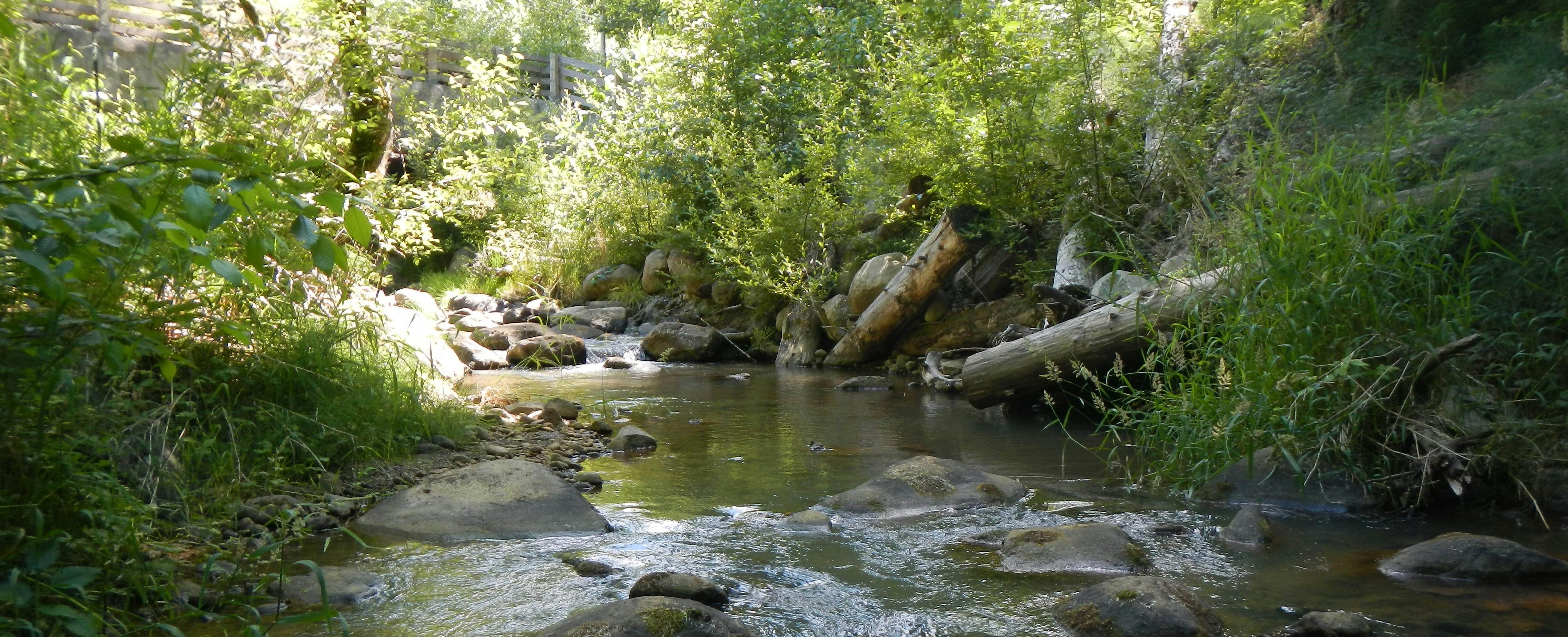Bellevue’s Watershed Management Toolbox
Before we start fixing up our “house”, we need to know what exactly needs fixing, and what tools we have in our toolbox. Each watershed in Bellevue is different and some streams are healthier than others. The project team is studying the health factors, or things that tell us if a watershed is healthy or unhealthy. Understanding the health factors of Bellevue’s watersheds will help us create tools to protect, improve, or maintain current conditions.
The health factors for Bellevue’s watersheds include:
|
Stormwater runoff from roofs, roads, and walkways. |
Loss of floodplain or other natural surfaces that filter runoff and protect streambanks. |
|
 There are over 20,000 storm drains in Bellevue! Have you noticed the blue and white “Don’t Pollute, Drains to Stream” signs near Bellevue’s storm drains? These are an important reminder that what drains from our roads and walkways eventually ends up in our streams and lakes. |
 With fewer natural surfaces and floodplains to slow stormwater runoff, streambanks can become eroded. Bank erosion means that sediments, like dirt and rocks, wash into streams and can cause impacts to water quality and wildlife habitats. |
|
| Pollutant levels in streams, lakes, and wetlands. |
Physical barriers to fish and wildlife, like culverts. |
|
 Pollutants like pesticides, E. coli or chemicals may not be visible to the naked eye, but they still harm our streams. Stream scientists test water quality to understand more about what is impacting the health of a stream. Pollutants like pesticides, E. coli or chemicals may not be visible to the naked eye, but they still harm our streams. Stream scientists test water quality to understand more about what is impacting the health of a stream. |
 This culvert under NE Eighth Street near 132nd Ave NE in Bellevue allows Kelsey Creek to flow under the road. Culverts like this one are often too shallow and require too big of a drop for fish to safely pass through. |
Identifying these factors allows the team to decide which streams need help first and what kind of actions will be most useful for each watershed.
The Watershed Management Plan will recommend actions the city, our partners, and you can use to improve watershed health.
| Projects, such as building a stormwater facility that filters rainwater runoff from streets before it gets to streams. |
Programs, like planting and retaining more trees citywide to provide stormwater flow control. |
|
 Features that remove pollutants from stormwater can be added to new and existing buildings. This detention vault temporarily stores runoff underground and then slowly releases it to reduce the impacts of flooding. |
 Trees in the city support stream health by soaking up and holding stormwater before it reaches storm drains. |
|
| Maintenance, such as regular street cleaning to keep chemicals and trash from entering streams. | Policies or regulations, like changes in city code to encourage developers to include building features that clean runoff before it enters streams. | |
 Street sweepers help keep our streams clean with a combination of water, brooms, and vacuums! As they drive along our streets, the big brooms on either side of the sweeper push garbage and other pollutants towards the back of the vehicle, where they are vacuumed up and disposed of. |
 These open bottom infiltration chambers collect stormwater runoff from storm drains and allow it to soak into the ground below. |
What tools would you include in your stream health toolbox?



Thank you for your contribution!
Help us reach out to more people in the community
Share this with family and friends